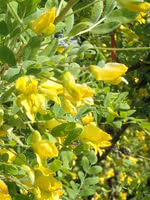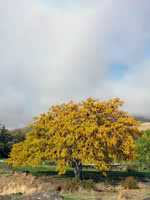Mon-Fri 9am - 5pm Mountain time
Common Caragana vs Thornless Honeylocust
Caragana arborescens
Gleditsia triacanthos inermis
Common Caragana is a fast growing shrub that's known for its exceptional hardiness and drought tolerance. Although it's most commonly planted in shelterbelts, Common Caragana is also an excellent hedge or feature shrub.
Note: in warmer areas, this species can be difficult to contain once planted. Use the right plant in the right place.
Thornless Honey Locust makes an excellent shade tree with its lacy foliage and dappled shade. The leaves are honey-yellow, light and airy, providing interesting color and texture to your landscape. This variety is thornless, and the seeds and pods provide food for wildlife such as deer and squirrels.
The Thornless Honey Locust is tolerant of drought, various soil conditions, and even road salt.
Common Caragana Quick Facts
Thornless Honeylocust Quick Facts
In row spacing: 0.3 m (1.0 ft)

